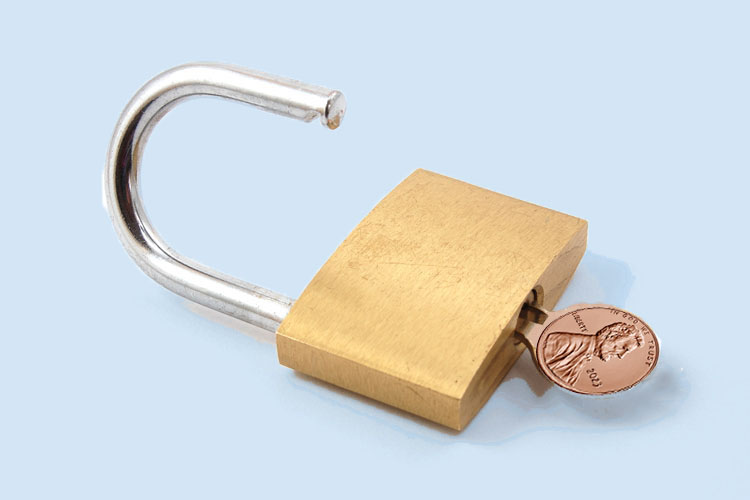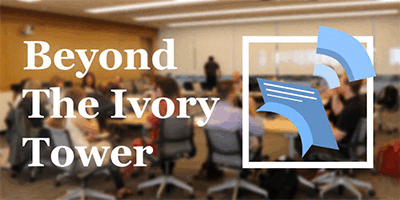Philosophers, Should You Pay to Publish Your Paper? (guest post)
“In a survey of 27 philosophy of science journal editors we conducted in 2023, many, if not most of them, did not know that they were working in a transformative journal.” A what now?
The landscape of academic publishing is changing. In the following guest post, Sophia Crüwell (Cambridge), Chiara Lisciandra (Groningen), and David Teira (UNED) talk about the push towards Open Access, its effects, and ways it can go better and worse.

Philosophers, Should you Pay to Publish your Paper?
by Sophia Crüwell, Chiara Lisciandra, David Teira
If you have recently had a manuscript accepted by a journal published by one of the traditional subscription-focused publishers (e.g., Springer), you may have noticed a not-so-subtle change in the publication options. As part of your publishing agreement, the interface may nudge you to pay an Author Publication Charge (APC) to publish your paper Open Access. The traditional publish-for-free, behind a paywall, tick appears only in a smaller typeset link somewhere at the bottom of the screen. Why is this happening?
In November 2022, under the auspices of three major international societies in the philosophy of science, we started an inquiry to understand how we ended up here. Back then, research institutions and funding agencies on both sides of the Atlantic had decided that their scientific output should be Open Access (OA): free for everyone to read after publication. (Great! Or so it seems.) To make this happen, funding bodies and other institutions signed Transformative Agreements with publishers, paying for thousands of APCs in advance so (a) their affiliated authors could publish OA at no cost for them; and (b) journals would transition to a Gold Open Access regime, in which APCs, instead of subscriptions, would cover the journal costs.
The drawback: once the transition was completed, authors without the necessary funds may not be able to publish in the leading journals in their fields.
For the funding bodies, as Paola Galimberti explains here, transformative agreements were supposedly temporary and cost-neutral: the money previously spent in subscriptions would be invested in APCs, making research accessible to everybody. But the publishing world is changing: in 2018, 4,18 million articles were published; in 2022, the figure rose to 5,14 million. Many of these were in journals put out by new aggressive publishing houses, like MDPI and Frontiers, in which quantity often trumps quality, because their business model relies entirely on APCs: the more papers they publish, the bigger the earnings.
Recent scandals (about flawed refereeing) have shown the limitations of this approach. For traditional subscription-focussed publishers—as Ties Nijssen from Springer told us in our first panel session in Belgrade—transformative agreements were a strategy to preserve the quality and diversity of their journal portfolio. For example, Frontiers has just one big journal per field, whereas traditional subscription publishers often have many journals that specialize publishing research for a specialized community. The challenge for them was not to make the same mistakes as their new peers and risk becoming seen as predatory. There are already signs that it is not going to be easy.
In the summer of 2023, transformative agreements had their first reality check, as Sabina Leonellli laid it out for us (also in Belgrade). Very few journals had transitioned to a Gold Open Access regime: despite the subsidized APCs, most authors were still choosing to publish for free behind a paywall. This is not necessarily unreasonable: a study by Brad Wray shows that, for most papers, citations tend to be similar whether they are OA or not. cOAlition S, an alliance of EU funding bodies, decided they would not be paying subscription fees and APCs. Traditional publishers decided they would carry on with transformative journals, otherwise they would not be able to resist the competition of the more profitable ventures such as Frontiers and MDPI. This is why you, author, are finding a new interface nudging you to pay in journals where you did not expect it.
Why should this concern you?
It is already happening: Cambridge University Press is moving its leading philosophy journals to a Gold OA regime (see Episteme, here). They promise that if you do not have funds to pay APCs, there will be waivers. While this is generous, it is not guaranteed, and other publishers may not be so generous.
Many scholarly societies pay their expenses (for, e.g., conferences) through the journals they own. Publishers shared with them, as royalties, part of the money they earned via subscriptions. Now, with APCs, it remains to be seen how many journals will survive and how much money they generate for redistribution. Jim Weatherall, editor of a Cambridge journal, Philosophy of Science, explained that their current agreement between Cambridge and the PSA runs for another three years.
Meanwhile, few are noticing: in a survey of 27 philosophy of science journal editors we conducted in 2023, many, if not most of them, did not know that they were working in a transformative journal, evolving into a Gold OA regime. Publishers are seemingly not involving the key stakeholders in this conversation.
Your next question would be, we guess, what should you do about it?
If you are involved in a scholarly society, perhaps you could start a discussion about how central journals are to its mission. For instance, in response to the merger of Studies B with two other Elsevier journals, philosophers of physics have created a society that is entirely devoted to fund a new Diamond Open Access journal, Philosophy of Physics (see its editor, David Wallace, explaining it here)
In your department, you may consider supporting repositories compliant with OA principles, like Philpapers or the Phil-Sci Archive. Forget, please, about Researchgate or Academia.edu: they are for profit. Small scholarly communities like philosophy need to consolidate their own OA institutions to have an alternative if the Gold OA regime comes to prevail.
Let us find better incentives for the people bearing the hidden costs of journal publication, namely editors and reviewers. These are volunteers donating their time with no significant compensation from the publishers. Alex Levine calculated that the time he spent over the decade he edited Perspectives on Science costs $50,000 at his salary rate. That extra million papers published between 2018 and 2022 would only increase the editorial burdens, and few volunteers had an incentive to shoulder more of it. Without, e.g., teaching load reductions, extra points for service in promotion evaluation, etc., we cannot expect non-profit OA institutions to survive.
As of now, this is how the situation looks for us. We will keep reporting.


Hey folks, just a typo (x2): it’s MDPI, not MPDI.
Thank you. Fixed now.
My thanks to the authors. As a junior person without editing experience, I appreciated the clarity and specificity of this analysis.
Thanks for sharing your survey results!
Re: Repository Platforms
ResearchGate and Academia.edu are used by far more fields than PhilPapers or Phil-sci Archive. Moreover, ResearchGate has been shown to be more widely used by researchers in the sciences while Academia.edu was more used by researchers in the humanities. I cover this and more at Why Make an Academic Social Network Profile. To point is just that using only the non-profit platforms is a non-starter for science-oriented interdisciplinarians. If a non-profit wants to compete with the large interdisciplinary community and other features of ResearchGate et al., that’d be great. Until then, I’ll continue to need sites like ResearchGate.
Admittedly, I very much dislike that Academia.edu has relied on our worst impulses to keep itself afloat— e.g., telling non-paying users that they can pay to find out what people are saying about them on the platform. And after years of getting no value from Academia.edu, I deleted my account. Kudos to PhilPapers/PhilPeople for providing more value than Academia.edu!
Finally, posting links to our accepted manuscripts usually makes them searchable on generalist academic search tools like Google Scholar. Even the copies I post only to my website show up in gScholar searches. And if I put a link to the DOI URL on the title page, people can easily find/scrape the latest bibliographic information (e.g., for bibliographic apps like Zotero). So posting our accepted manuscripts removes the need for other forms of open access (e.g., paid open access), no?
I totally agree about posting things to open repositories. As an early career scholar, I unfortunately need so-called *good* publications (which doesn’t mean quality of work, but rather perceived quality of where it is published). But once I have established myself, I will seriously consider only publishing things to open repositories like arXiv, ResearchGate, or PhilPapers. And doing so does not even mean that articles will not be peer-reviewed, as we can send things to our peers and get their feedback ourselves. In fact, I see a benefit to this in general terms, as posting articles in this way will require that peer-reviewers be okay being identified on the article (so that one can corroborate the peer-review), which will weed out some of the inappropriate in-house circles of authors/reviewers you get in particular journals.
Honestly, one thing I never see in these discussions is what the actual burden of cost is for publishers. I just finalized proofs for one article and have two others nearing final publication, and the APCs for all of them would run somewhere around 2000-3000 €/$/£. But these are journals where I have refereed articles, without ever receiving any sort of compensation, and where I know the editors aren’t compensated either. To me, that is fine, as I see it as part of our responsibility as academics to do not just our own research but to curate and contribute to the totality of work. But the question remains, why does it cost thousands to publish something if the authors, referees, and editors all receive nothing from the actual publications? How much does Springer/Elsevier/OUP/etc. actually need to spend in order to typeset an article (which the authors usually have to do mostly themselves anyway) or to upload it to an online database (since no one is really getting print copies anymore anyway)? Without transparency from publishers on why they need so much money upfront, given that virtually all of the work in a publication is done by people unpaid by the publisher, I don’t see why we should pay anything. Or have I missed something; does the publisher do something worth thousands of dollars/Euros/pounds by copy-editing an already multiply edited piece or uploading it to a website?
Ini patut diperhatikan dg serius
It would be great if someone could shed light on this.